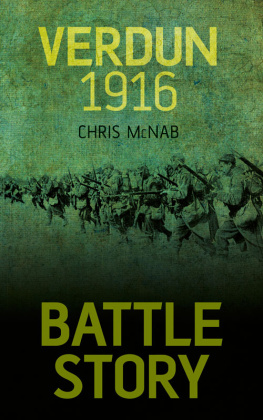The cover image was created by the transcriber and is placed in the public domain.
THE FRANCO-BRITISH OFFENSIVE OF THE SOMME (1916).
THE OBJECTIVES OF THE OFFENSIVE.
In June, 1916, the enemy were the attacking party; the Germans were pressing Verdun hard, and the Austrians had begun a vigorous offensive against the Italians. It therefore became necessary for the Allies to make a powerful effort to regain the initiative of the military operations.
GENERAL FOCH, IN COMMAND OF THE FAYOLLE-MICHELER ARMY GROUP, DURING THE SOMME OFFENSIVE OF 1916.
The objectives of the Franco-British offensive were, to regain the initiative of the military operations; to relieve Verdun; to immobilise the largest possible number of German divisions on the western front, and prevent their transfer to other sectors; to wear down the fighting strength of the numerous enemy divisions which would be brought up to the front of attack.
Thanks to the immense effort made by the entire British Empire, their army had considerably increased in men and material, and was now in a position to undertake a powerful offensive.
Under the command of Field-Marshal Haig, two armies, the 4th (General Rawlinson) and the 2nd (General Gough) were to take part in the offensive.
In spite of the terrible strain France was undergoing at Verdun, the number of troops left before that fortress, under the command of General Ptain, who had thoroughly consolidated the defences, was reduced to the strictest minimum, and the 6th and 10th Armies, under the command of General Fayolle and General Micheler, respectively, were thus able to collaborate with the British in the Somme offensive.
Within a few days of the enemy's formidable onslaught of June 23 against the ThiaumontVaux front, in which seventeen German regiments took part (see the Michelin Guide: "Verdun, and the Battles for its Possession" ), the Allied offensive was launched (July 1).
FRENCH HEAVY GUN ON RAILS.
The Theory, Methods and Tactics adopted
With both sides entrenched along a continuous front, the predominating problem was: How to break through the enemy's defences to the open ground beyond the last trenches, and then force the final decision.
In 1915, the Allies had endeavoured unsuccessfully to solve it; in 1916, the Germans, in turn, had suffered their severest check before Verdun.
Putting experience to profit, the Allies now sought to apply the methods of piercing on broader lines.
The defences having increased in strength and depth, the blow would require to be more powerful, precise, and concentrated as to space and time.
After the attacks of September, 1915, the French Staff set down as an axiom that "material cannot be combatted with men." Consequently, no more attacks without thorough preparation; nothing was to be left to chance.
The orders issued to the different arms, divisions, battalions, batteries, air-squadrons, etc., were recorded in voluminous plans of attack, the least of which numbered a hundred pages.
Thousands of aerial photographs were taken and assembled; countless maps, plans and sketches made. Everything connected with the coming drama was methodically arranged: the staging, distribution of the parts, the various acts.
Such was the intellectual preparation which, lasting several months, was carried out simultaneously with the equipping of the front line.
Equipping the Front Line
Preparing for a modern battle is a Herculean task. At a sufficient distance behind the front line immense ammunition and revictualling depts are established. Miles of railway, both narrow and normal gauge, have to be put down, to bring up supplies to the trenches. Existing roads have to be improved, and new ones made. In the Somme, long embankments had to be built across the marshy valleys, as well as innumerable shelters for the combatants, dressing-stations, and sheds for storing the ammunition, food, water, engineering supplies, etc. Miles of deep communicating trenches, trenches for the telephone wires, assembly trenches, parallels and observation-posts had to be made. The local quarries were worked, and wells bored.
Ginchy, bombarded by the British on July 11, 1916.
Ginchy, ten days later (July 21, 1916).
Ginchy, two days before capture by the British (Sept. 7, 1916). See p..
ILLUSTRATING THE PROGRESSIVE DESTRUCTION AND LEVELLING OF A VILLAGE BY ARTILLERY.
FIRING A 12-INCH LONG-RANGE GUN.
The Part Played by each Arm in the Different Phases of the Attack
In modern, well-ordered battle, it is the material strength which counts most. The cannon must crush the enemy's machine-guns. Superiority of artillery is an essential element of success.
According to the latest formula, "the artillery conquers, the infantry occupies."
At each stage of the battle, each arm has a definite role to play.
The Artillery
Before the battle, the artillery must destroy the enemy's wire entanglements, trenches, shelters, blockhouses, observation-posts, etc.; locate and engage his guns; hamper and disperse his working parties.













